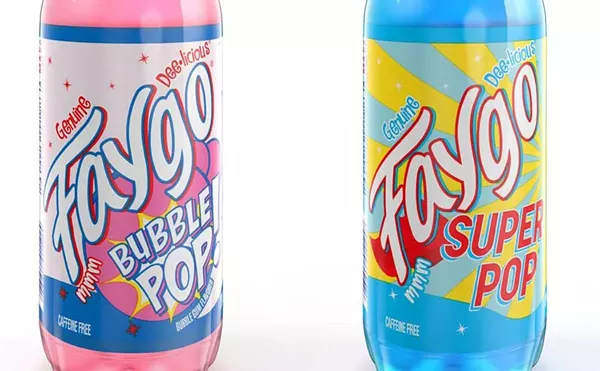Asian carp arrived in Detroit.
No, it didn't invade through the Great Lakes into our local waterways, as some scientists fear it will in the next 10 years. Instead, it landed via shipping truck on my front porch, cleaned, smoked, wrapped and ready to be plucked from its bones and spread onto crackers at a backyard barbecue.
And we ate it, though that itself is not a story. My dinner group was not the first to consume the carp that's better known for its invasion of the Mississippi River and its tributaries — and the disaster it could create in the Great Lakes — than for its culinary value as a main course.
No, for years now in central Illinois, enterprising cooks have breaded it, deep-fried it and ground it into "fishburger." A few Chicago chefs have created signature dishes using it, and the fish, actually, is a rare but sought-after delicacy in Asia, having been overfished from its native waters.
It's also in demand in Eastern Europe, specifically among Jewish communities, because of its suitability for gefilte fish, the poached patties that are a traditional part of that culture's cuisine. An Illinois fish merchant sold 20 million pounds of it last year, but we'll get to him in a minute.
The real news here is that the carp is, well, really good.
Yes, that big-headed, bulgy-eyed fish that leaps out of the water and injures boaters is fit for human consumption. Not only that, but as it's caught in the wild, many diners believe it's better for you than farm-raised fish. And if you can get by the bones and the big bloody vein? Well, it's pretty good, if a bit bland.
Slather on some hot sauce, spread it on a salty cracker, mix it up with some mayo, seasoning and lemon, and you won't believe it's the same fish you've read about as a scourge or seen in YouTube videos leaping out of the rivers.
"All that's wrong with this fish is its name and the association that has," said Andy Groh, who hosted our carp feast in his Grosse Pointe Park backyard.
True. The "invasive species" label doesn't work well at enticing diners, and the carp's appearance — bulging eyes, bloody flesh and bull heads — doesn't exactly promote its presentation on your plate.
But few fish outside of contrived aquariums are exactly pretty, and, as a Chicago Tribune food critic pointed out, no market existed for "slimehead" until it was renamed "orange roughy" nor did "Patagonian toothfish" take off until it was called "Chilean sea bass."
As we picked appetizer bites off the smoked body at our party, one of our guests wrinkled his nose.
"I don't eat bottom feeders," he said. But he did try it. "I still don't like it. I don't like where it came from. I don't eat bottom feeders."
Turns out his assumptions were wrong. The Asian carp actually feed on microscopic plants and animals — not other fish — moving freely in the water instead of on the muck and debris on the river bottoms like common carp or even the popular catfish.
That makes carp meat better-tasting and relatively low in contaminants compared to catfish and common carp from the same waters, studies have shown.
True, the fish's anatomy works against its acceptance in American markets, where bony fish are not embraced. The spine and thick bloodline make prepping the carp a chore and reduce the relative yield of edible meat. In simple terms: They're high-maintenance to prep. When we pulled the five pounds of smoked fish out of the bag, we also pulled a thick skeleton and some dark meat that, well, went to the neighborhood alley cats.
Our relative affection for the fish was predicted by Kevin Irons. He's an ecologist with the Illinois Natural History Survey at the Illinois River Biological Station, and he sent me the fish after I asked where we could get some.
"You'll like it," he promised me before it got here. "It really is quite good."
Irons has been studying and working to prevent the spread of the carp for more than a decade. He's eaten Asian carp at least a dozen times. "I wonder sometimes why I don't eat it more," he says.
Irons served it to the chamber of commerce in the central Illinois town of Havana years ago. Although the diners were accustomed to eating such river fish as buffalo and big-mouth bass, "The consensus was they preferred the carp to the stuff they were familiar with eating," Irons says.
He admits the Illinois crowds have had to overcome the fish's appearance too. "They kind of gag and say, 'I'm not eating that.' But then they taste it and I don't hear any complaints at all," he says.
Irons isn't saying that the fish's possible entrance into the Great Lakes will be anything less than the disaster Michigan thinks it is. But as a person familiar with central Illinois, where the fish have replaced most other species, he thinks finding a market to recoup costs of harvesting the carp is a small silver lining.
"Because they're here, the solution is to reduce their numbers. I don't see a silver bullet to reduce them except for large-scale commercial fishing," Irons says. "I don't want to see a sustained population, but if we reduce their numbers, they affect other species less. That would also help the Great Lakes issue. Fewer fish on the Illinois River would mean it would be less of concern that they'd get into Lake Michigan. It can't be the only solution, but it would be a release valve."
Of course, for any such product, there needs to be a market and demand. And while Schafer Fisheries, located in northwest Illinois on the Mississippi River, is exporting much of that 20 million pounds to six countries, owner Mike Schafer says the American demand isn't there yet.
He's talking to some fast food chains about using Asian carp for fish tacos, and he keeps his wholesale prices of the fish relatively low. "It's very reasonable because we're trying to promote it," he says.
He's also made the fish into jerky and processed it into a stick like a Slim Jim. National media have started picking up on the story, and Schafer has served carp to news crews from the networks. "They're really impressed with how it tastes," he says.
So the big question is, can we get Asian carp in Detroit? I asked my favorite fishmonger, Diane Finken, owner of Blue Bay Fish in Grosse Pointe Woods. "I haven't had anyone ask for it," she told me. "But if people do, I'll get it."
My inquiry was overheard by another customer who raised his eyebrows and asked, "What are you talking about?" When I explained I'd eaten the carp and was going to write about the novelty of it, he laughed.
Having lived in Europe, he said he had all sorts of "delicacies" there — such as sea urchin — that wouldn't fly, swim or land on an American table.
Maybe the carp will, we decided.
Sandra Svoboda is a Metro Times staff writer. Contact her at 313-202-8015 or [email protected]





